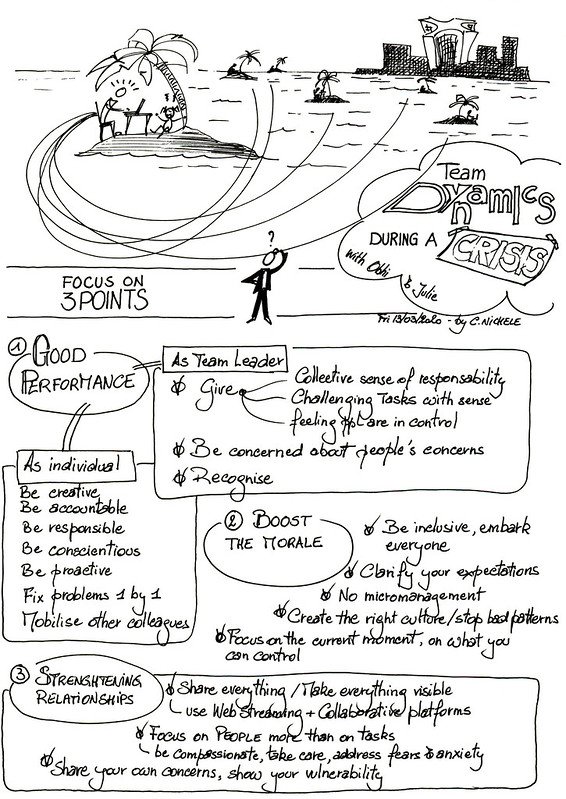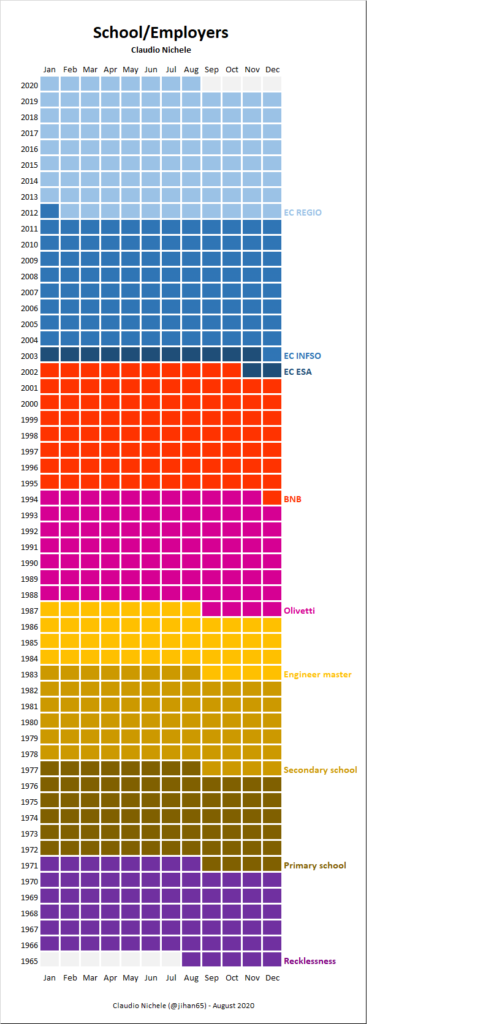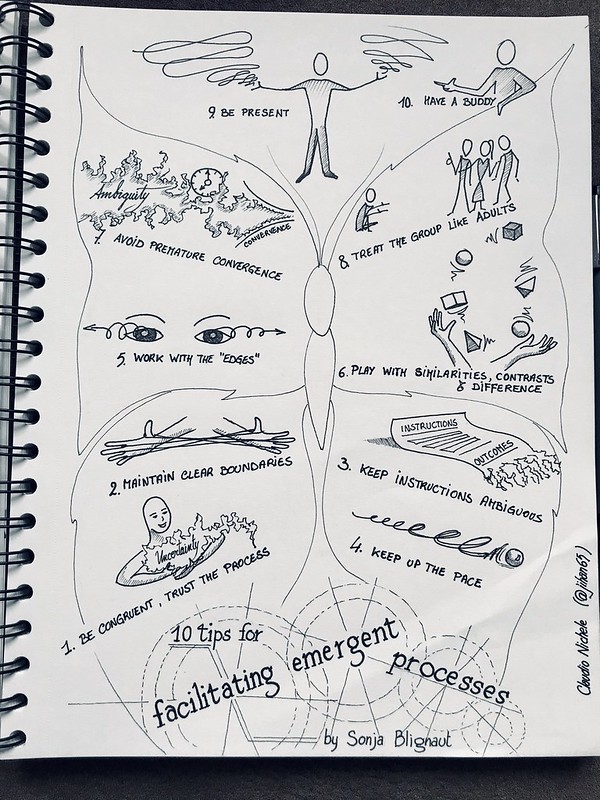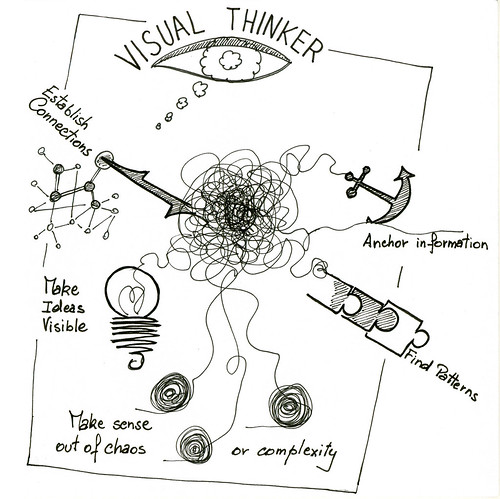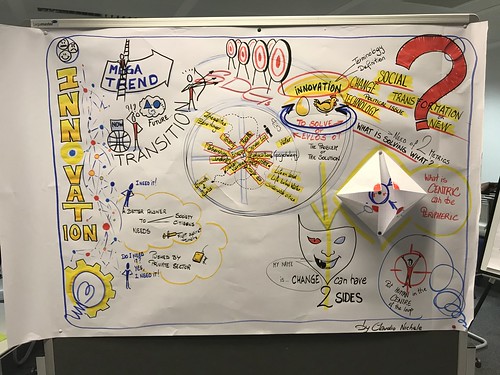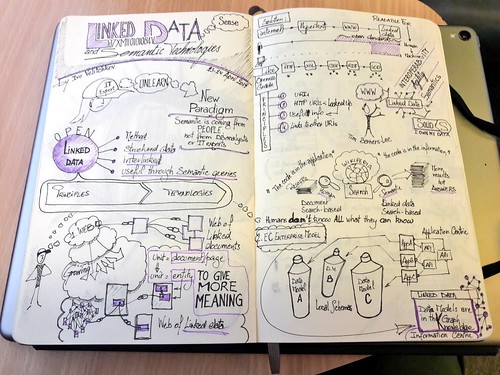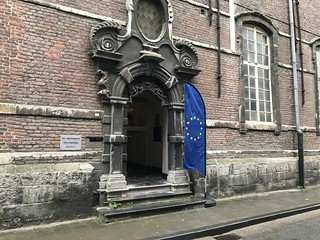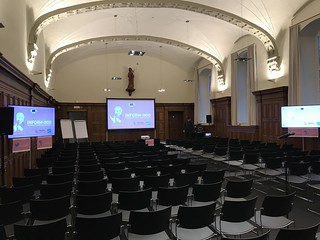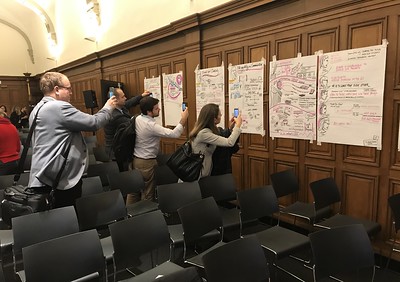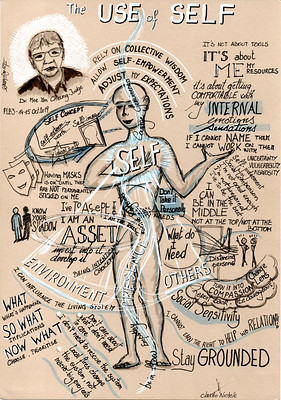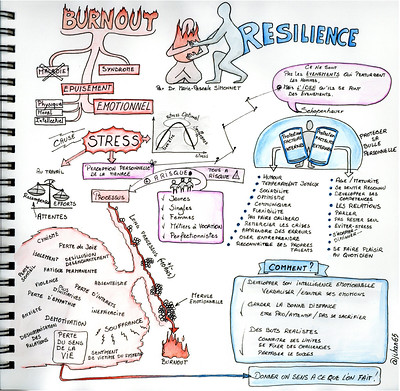Read the English version.
Je voudrais partager mon expérience personnelle sur comment j’ai évité de justesse de tomber au fond du précipice du burnout. Sans vouloir donner de leçons à quiconque, j’espère que mon histoire pourra aider d’autres personnes à prendre conscience de leur état afin d’éviter de finir au fond du trou.
C’est en participant à un atelier avec le Dr. Mee-Yan Cheung Judge sur The Use of Self que le déclic salvateur s’est déclenché en moi. Deux jours de plongée en profondeur sur l’utilisation du Soi et de la Présence m’ont obligés à me mettre à nu devant mon miroir interne. C’est surtout durant les exercices que j’ai réalisé combien j’étais mal mentalement et physiquement et à quel point je me le cachais à moi-même. Deux ans que je descendais cette pente dangereuse au travail, et au privé aussi dernièrement, sans vouloir me rendre compte de l’évidence. Je ne citerais pas ici les causes qui m’ont amenées à cette descente vers l’enfer, chacun de vous les déduira facilement par ce qui suit ou bien y entreverra les siennes.
« L’utilisation du Soi est l’élément clé de l’efficacité avec laquelle nous sommes en mesure d’exécuter avec succès nos rôles. Il repose sur notre conscience de qui nous sommes, la clarté de nos intentions, notre conscience de la situation, nos choix et notre propre gestion en agissant.» – Dr. Mee-Yan Cheung Judge
Prendre soudainement conscience de mes sensations internes que je m’efforçais de me cacher, ainsi que le déni de mon mal-être, l’illusion que tout va bien ou ira mieux demain, le manque total de compassion envers moi, tout ça a été un choc émotionnel énorme. Le choc fut d’autant plus violent que je connaissais parfaitement les symptômes et les conditions qui peuvent amener au burnout. Car je les ai approfondis, illustrés et communiqués grâce à deux spécialistes, Florence Bierlaire et Dr Marie-Pascale Simonnet.
Les personnes à risque burnout, dont je fais partie, sont:
- perfectionnistes
- avec des valeurs et le sens d’une mission
- enthousiastes
- généreuses
- motivées
- travailleuses
Les symptômes, que je sentais et refusais d’admettre:
- manque de vitalité
- désillusion, désenchantement
- perte de joie
- sentiment d’indifférence
- repli sur moi-même, isolement
- cynisme
- impatience
- irritabilité
- déconcentration
- inefficacité
- perte de sommeil
- sentiment d’impuissance et perte de contrôle de ma vie
- démotivation
- anxiété
- perte de sens au travail
- dernier symptôme fatal que j’ai évité de justesse: effondrement et démolition
C’est en pleurant sur mon état que j’ai averti Dr. Mee-Yan Cheung Judge que je quittais son atelier bien avant sa fin. Elle m’a embrassé, félicité pour mon courage et ma prise de conscience, et souhaité que je prenne soin de moi dorénavant.
Le soir même j’étais chez mon docteur, le brave Dr Sory. Après m’avoir écouté longuement, il m’a mis au repos pour quelques semaines pour épuisement mental avancé et fortement conseillé de voir un psychologue pour suivre un traitement. Ce même soir, je dessinais ce qui venait de se passer. Avoir ouvert les yeux sur mon mauvais état grâce à l’atelier de Dr. Mee-Yan Cheung Judge, la visite chez mon docteur, et la décision de prendre soin de moi pour éviter le burnout :
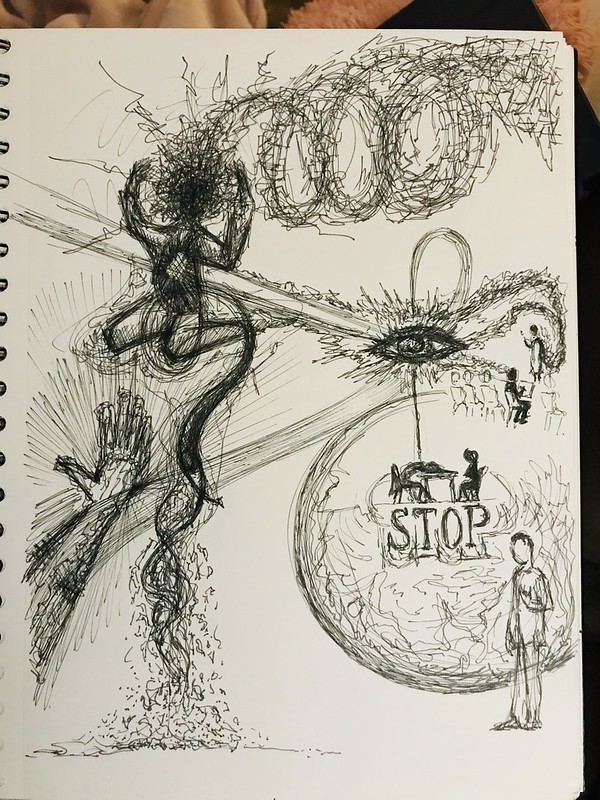
Quelques temps après, j’avais le sentiment que je venais d’éviter le pire, que j’avais demandé et reçu le soutient qu’il me fallait, même si la remontée s’annonçait difficile et longue. Comme pour moi le dessin est une thérapie depuis l’enfance, j’exprime sur papier ce que je ressens, voici comment j’ai exprimé mes ressentis:

Les visites chez le psychologue m’ont aidé à établir une liste d’actions et de modes de pensées qui me feraient remonter la pente, lentement mais sûrement.
J’accepte:
- Mon état d’épuisement, que je suis en traitement et que ça va durer longtemps
- je serais fragile encore longtemps, je dois donc me préserver et être extrêmement prudent à ne pas me fier trop vite à un retour au mieux (Une rechute serait pire)
- j’ai un seul corps et j’ai dépensé plus de ressources qu’il n’en a (identique au problème de surconsommation des ressources de notre planète)
- je dois parler pour exprimer ce qui ne va pas et demander ce qui me fait du bien
- Je ne peux pas faire plaisir à tout le monde en étant toujours gentil
- je peux décevoir en disant non ou en refusant de faire quelque chose
- Il n’y a que moi qui puisse prendre soin de moi
Je m’engage, tant que je ne suis pas revenu au top de ma santé, à:
- Écouter les signaux de mon corps et chaque jour évaluer comment je me sens par un exercise d’introspection (15 minutes de méditation pour faire le point)
- Réagir immédiatement le lendemain pour revenir à un niveau de bien-être acceptable, si le résultat de l’évaluation n’était pas satisfaisant
Je m’engage dés à présent et pour le futur à :
- Reprendre le contrôle de ma vie sur ce qui est sous ma responsabilité
- Mettre des barrières au travail pour éviter le stress permanent
- Dire stop à la surcharge de travail, et de travailler uniquement pour les ressources d’un seul corps et un seul mental
- Arrêter ce qui me pompe de l’énergie et qui n’a pas de sens
- Me ressourcer régulièrement à travers ce qui me fait du bien, les marches dans la nature, le dessin, la méditation, la lecture, les voyages, la famille, etc
- Questionner mon employeur, ma hiérarchie directe, sur ce qu’ils vont mettre en place pour que j’aille mieux. Si j’assume mes responsabilités, comment assument-ils les leurs pour prévenir mon burnout et celui des autres collègues ?

J’ai repris le travail depuis peu. J’ai reçu beaucoup d’encouragements de la part de mes collègues, beaucoup de compréhension aussi, et toujours la même constatation que le surmenage au travail et le burnout guètent de plus en plus de gens et de plus en plus souvent. De la part de ma hiérarchie directe, j’ai aussi reçu une écoute attentive, de la compréhension, des réarrangements de mon travail (Je suis, par exemple, passé d’un à deux jours de télétravail), et d’autres mesures qui devraient m’aider.
Je suis conscient que je suis encore loin d’être revenu à mon état normal de bien-être, je suis encore fragile. Je dois rester fort prudent. Mais je sais que je suis sur la bonne voie.
J’ai appris à mes dépens ce que c’est que de se croire un surhomme capable de pouvoir tout faire, vite et bien, souvent pour faire plaisir, encore plus souvent par peur de décevoir. J’ai appris que le manque de congruence au travail, le manque de sens dans trop d’activités, créent des failles qui ne font que s’agrandir en moi pour devenir un abysse. J’ai appris qu’être gentil tout le temps et avec tout le monde ne contribue pas à me respecter. J’ai appris que ne pas écouter les sensations internes de mon corps est le pire mal que je puisse me faire. J’ai appris que je suis le seul responsable de mon bien-être.
Je remercie les personnes suivantes pour m’avoir aidé, conseillé, guidé, soutenu, informé, aimé, consciemment ou pas: Dr. Mee-Yan Cheung Judge, Florence Bierlaire (psychoterapeute et amie), Dr Marie-Pascale Simonnet (Psychiatre à la Commission Européenne), Andrea Agosta (mon psychoterapeute), Dr Sory, Agnès (ma cheffe), ma famille en commençant par ma femme et mes enfants qui ont endurés des moments difficiles, mes amis et collègues.


